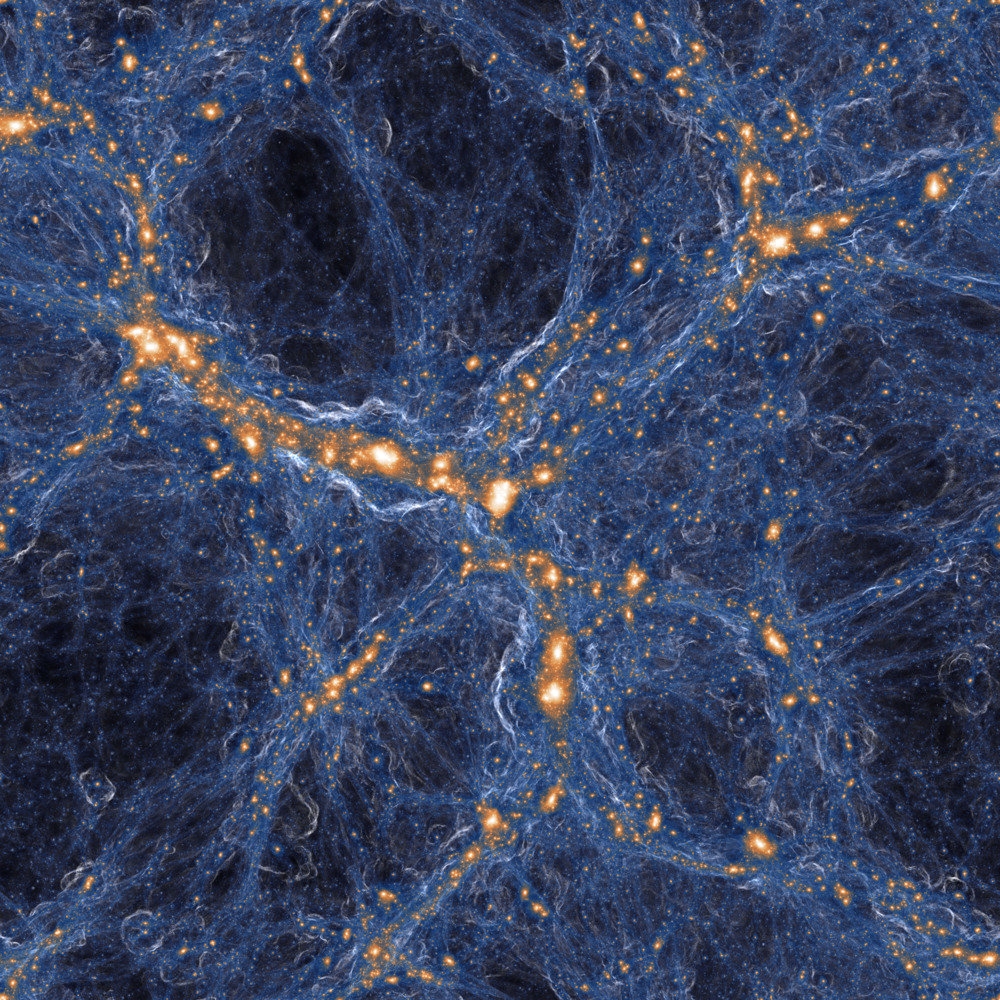Astrophysicists release IllustrisTNG, the most advanced universe model of its kind

Visualization of the intensity of shock waves in the cosmic gas (blue) around collapsed dark matter structures (orange/white). Similar to a sonic boom, the gas in these shock waves is accelerated with a jolt when impacting on the cosmic filaments and galaxies. Credit: IllustrisTNG collaboration
February 1, 2018, Simons Foundation
Novel computational methods have helped create the most information-packed universe-scale simulation ever produced. The new tool provides fresh insights into how black holes influence the distribution of dark matter, how heavy elements are produced and distributed throughout the cosmos, and where magnetic fields originate.
Led by principal investigator Volker Springel at the Heidelberg Institute for Theoretical Studies, astrophysicists from the Max Planck Institutes for Astronomy (MPIA, Heidelberg) and Astrophysics (MPA, Garching), Harvard University, the Massachusetts Institute of Technology (MIT), and the Flatiron Institute's Center for Computational Astrophysics (CCA) developed and programmed the new universe simulation model, dubbed Illustris: The Next Generation, or IllustrisTNG.
The model is the most advanced universe simulation of its kind, says Shy Genel, an associate research scientist at CCA who helped develop and hone IllustrisTNG. The simulation's detail and scale enable Genel to study how galaxies form, evolve and grow in tandem with their star-formation activity. "When we observe galaxies using a telescope, we can only measure certain quantities," he says. "With the simulation, we can track all the properties for all these galaxies. And not just how the galaxy looks now, but its entire formation history." Mapping out the ways galaxies evolve in the simulation offers a glimpse of what our own Milky Way galaxy might have been like when the Earth formed and how our galaxy could change in the future, he says.
See full text